Stories from the Field
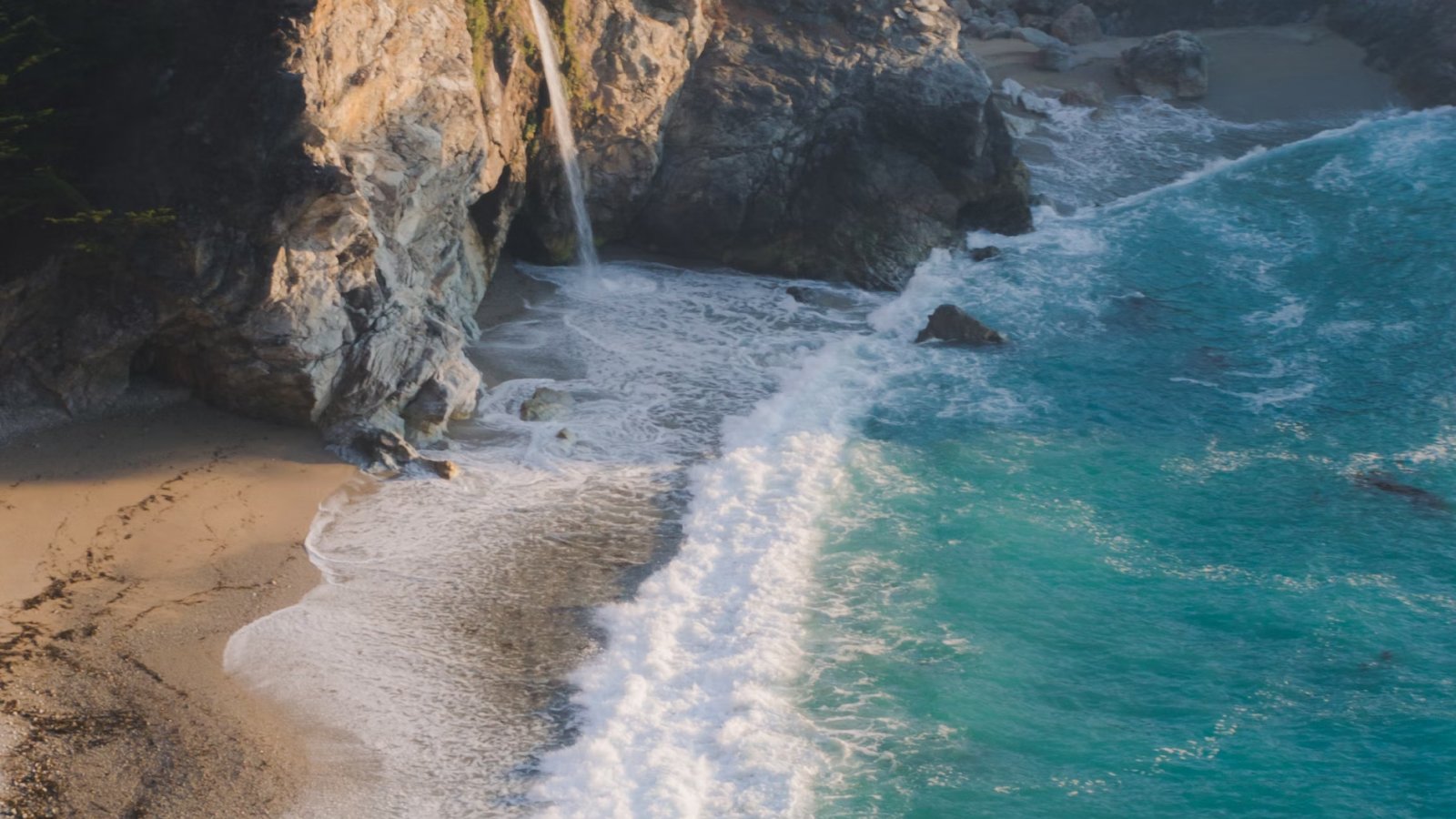

Analyzing Future Urban Growth and Flood Risk in North Carolina
Planners used NOAA regional land cover data to understand trends in development and predict future flood risk.

Analyzing Potential Aquaculture Opportunity Areas in Federal Waters off Southern California and the Gulf of Mexico
Data from MarineCadastre.gov and OceanReports were used to evaluate small, defined geographic areas to determine their potential suitability for commercial aquaculture.

Analyzing Sedimentation Processes to Guide Conservation in Oregon
C-CAP data helped in the development of a conservation plan for the Yaquina watershed.

Applying Green Infrastructure to Stem Runoff and Safeguard Corals in Puerto Rico
Using OpenNSPECT, managers in Puerto Rico assessed whether green infrastructure would help lessen sediment and runoff into coral-inhabited waters.

Applying Ocean Economy Data in Monmouth University Class in New Jersey
Monmouth University class uses ocean economy and sea level rise data to teach students about the economic benefits of the ocean, and the implications of human use.
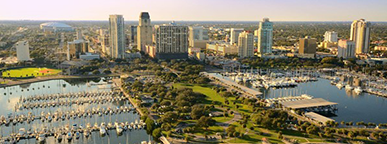
Applying the Marine Economy Framework to Inform the Economic Value of the Tampa Bay Estuary System
Partners conducted an economic impact analysis of the Tampa Bay estuary system to emphasize the value of the bay’s natural resources.

Assessing Climate Change and Coastal Hazards in Kauai
The Sea Level Rise and Coastal Flooding Impacts Viewer illustrated informational pieces and their impact on resilience planning efforts, and it identified existing gaps in scientific data and planning information.

Assessing Fire Hazard Risk in Southern California
C-CAP data were used to produce additional land cover information to assess the risk of fire and the proximity to urban developments.

Assessing Gaps in Wetland Information to Strengthen Gulf Resilience
Gulf Coast models and data help managers detect wetland areas that need monitoring in the face of sea level rise.

Assessing Land-Based Threats to Coral Reef Habitats in Laolao Bay, CNMI
OpenNSPECT and the Habitat Priority Planner were used to assess land based threats and prioritize restoration areas.

Assessing Sea Level Rise Impacts in an Environmental Science Class in Florida
Environmental science undergraduate students at Broward College examine global environmental change using NOAA’s Sea Level Rise Viewer.

Assessing Seagrass Vulnerability along Florida's Gulf Coast
The Sea Level Rise and Coastal Flooding Impacts Viewer data helped local planners identify the impacts of shoreline armoring on seagrass habitats.
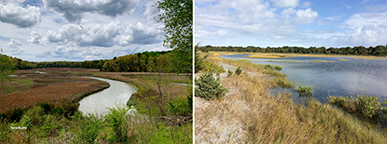
Assessing Tidal Marshes to Rank Resilience
The National Estuarine Research Reserve System used land cover data to rank marsh resilience and inform future restoration and conservation planning.
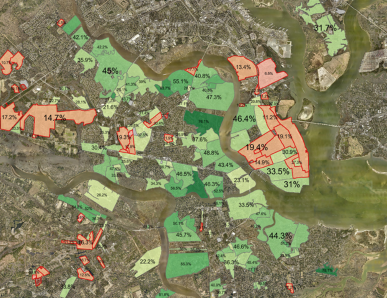
Assessing a South Carolina City’s Urban Heat Areas and Street Canopy Equity
NOAA’s high-resolution land cover data informed a City of Charleston initiative to analyze the equity of tree canopy cover in urban heat areas, which will inform the specific subdivisions that would benefit from tree-planting efforts.

Assessing and Managing Prop Scar Damage to Seagrass in Texas
High-resolution imagery was used to assess and monitor the effect of boating activity on seagrass meadows in Redfish Bay.

Assessing the Economic Significance of a Public Pier and Boat Launch in Maine
An analysis of the economic benefits of the Milbridge public pier and boat launch helps the community and local industries justify spending to remedy the effects of rapid sedimentation.

Assessing the Environmental Health of Streams in Washington
C-CAP land cover data helped determine the impact of development changes on stream health.

Assessing the Gulf of Mexico through the Ecosystem Status Report
A new report provides a series of indicators to assess the status of the Gulf of Mexico socioecological system.

Assessing the Impact of Impervious Surfaces on Water Resources in Southern California
C-CAP data were used to produce additional land cover information to assess the impact of impervious surface on water supply.

Assessing the Impacts of Hurricane Katrina in Louisiana
C-CAP data were used to evaluate the impacts of Hurricane Katrina in Breton Sound, Louisiana, and assess how this area had recovered almost one year later.

Assessing the Value of Nature’s Benefits in the St. Louis River Watershed
Researchers used land cover and change data for an ecosystem services valuation of the natural landscape.

Assessing the Vulnerability of Transportation Infrastructure on the Eastern Shore
NOAA Sea Level Rise and Coastal Flooding Impacts data helped perform an inundation vulnerability assessment in Virginia.

Boosting Community Storm Resilience in Alaska
A Digital Coast Fellow helped Alaska communities address flooding with new data and a visualization tool.

Building Awareness of Coastal Flood Risks in South Florida
Coastal Flood Exposure Mapper was used in South Florida to communicate coastal flooding and climate risks to residents.

Building Capacity for Identifying Hazard and Climate Vulnerabilities in Florida
Florida regional planning councils build local and regional capacity for identifying hazard and climate vulnerabilities to better inform local planning efforts.

Building Community Awareness of Coastal Flood Risks in the Charleston Region of South Carolina
Coastal Flood Exposure Mapper was used to communicate coastal flooding and climate risks to residents.

Building Community Resilience on Long Island, New York
The Coastal Resilience Long Island tool is being used by decision makers to gain a better understanding of ecological, social, and economic impacts from coastal hazards.

Building Resilient Communities in New Jersey
New Jersey communities use flood data and tools to build resilience.

Building Skills for Future Flood Hazard Preparedness in Puerto Rico
Coastal Inundation Mapping training provided partners with skills needed to recover from, and plan and prepare for, flood hazards.
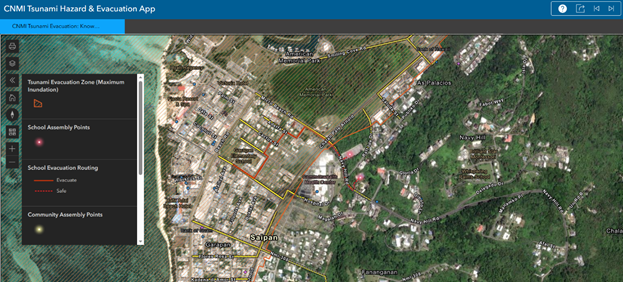
Building Tsunami Preparedness in the Commonwealth of the Northern Mariana Islands Using Lidar
Partners used NOAA lidar to revise tsunami hazard zones and develop evacuation maps.

Building the Case for a Comprehensive Sea Level Rise Strategy in Charleston, South Carolina
The Sea Level Rise Viewer and a NOAA resilience grant enabled partners in this port city to picture sea level rise risks and strengthen their resilience and recovery plans over the next fifty years.

Capturing Traditional Knowledge to Inform Restoration Planning in Hawai`i
Participatory mapping incorporates traditional knowledge into coastal planning and restoration.

Communicating the Importance of Regional Marsh Systems in the Northeast
A custom Wetland Benefits Snapshot and sea level rise maps were used to educate residents of several counties in Maine, Massachusetts, and New Hampshire.

Communicating the Importance of Sea Level Rise Planning in Florida
The Sea Level Rise Viewer helps communicate the importance of planning for future risks.

Conserving and Restoring New York's Estuarine Habitats
Benthic habitat maps were used to support conservation and restoration efforts in New York’s South Shore Estuary Reserve.

Consolidating Data Sets to Simplify Climate Risk Communication
The Sea Level Rise Viewer and Digital Coast data helped in the development of a flood risk tool to serve the planning needs of local communities.

Creating a Comprehensive Plan for Resilient Salt Marshes in New Hampshire
High-resolution mapping data inform critical salt marsh monitoring, modeling, and management planning in New Hampshire.

Creating a Custom Tool to Visualize Impacts of Sea Level Rise in South Carolina
South Carolina Aquarium created an application based on the Sea Level Rise Viewer that allows the public to visualize the potential direct impacts of sea level rise and flooding.

Determining the Effects of Urbanization on Carbon Sequestration in Mangroves in Puerto Rico
Researchers used C-CAP high-resolution land cover data to characterize the land adjacent to mangroves under study for carbon sequestration.

Determining the Source of Dune Erosion in South Carolina
C-CAP land cover data were used to examine the impervious surfaces adjacent to watersheds and determine the cause of dune erosion.

Developing an Economic Baseline for Recreation and Tourism on the Atlantic Coast
Researchers used Economics: National Ocean Watch (ENOW) data from the Ocean Jobs Snapshot to develop baseline economic profiles for 70 East Coast communities vulnerable to tourism and recreation impacts from offshore wind facilities.

Driving Conservation along South Carolina's Coast
Participatory mapping techniques helped establish a National Scenic Byway on Edisto Island, South Carolina.

Driving Innovation in the New Blue Economy through Government-Industry Collaborations in Southern California
Ocean Rainforest and the Department of Energy collaborated with NOAA to use MarineCadastre.gov data to suitably site a pioneering aquaculture pilot operation.

Engaging Communities in New Hampshire to Strengthen Resilience
New Hampshire communities used the Roadmap for Adapting to Coastal Risk to assess and address vulnerabilities and work toward reducing risk.

Establishing Fish Spawning Reefs in the Detroit River in Michigan
Vessel traffic data helped identify locations to construct fish spawning habitat for lake sturgeon, walleye, and other native fish.

Estimating the Economic Contribution of Gloucester, Massachusetts’ Working Waterfront
Harbor planners used ENOW data to tailor their maritime economy profile and identify ocean-related businesses at a city level.

Evaluating Coastal and Nearshore Habitat Projects and Data Needs in the Great Lakes
Great Lakes coastal zone management programs brought together partners to identify and evaluate potential habitat projects, along with data needs and gaps, through a series of workshops.

Evaluating Land Loss from Sea Level Rise along the Atlantic Coast
Land cover change data and technical assistance from C-CAP were provided for the EPA’s Climate Change Indicators in the United States report.

Evaluating Restoration Effectiveness to Reduce Runoff and Protect Corals in Puerto Rico
Watershed managers in Puerto Rico used OpenNSPECT to evaluate how effectively hydroseeding restores highly erodible lands to protect corals.

Examining Historical Imagery to Identify Sediment Sources in Maui
Pacific Historic Aerial Imagery from NOAA’s Office for Coastal Management helped identify sedimentation sources in Maui.

Examining Sea level Rise Exposure for Future Populations
Sea level rise data helped users assess future population and areas most affected by sea level rise.

Examining Sediment Transport Following a Hurricane in Florida
Researchers used lidar data to examine sediment migration on North Captiva Island following large-scale erosion from Hurricane Charley.

Facilitating Data Collection for Multiple Uses in Lake Michigan
Topographic and bathymetric data collected using the Coastal Geospatial Services Contract support multiple partner needs.

Facilitating Scientific Feedback on Dredging Impacts off the North Carolina Shore
OceanReports was used to help scientists and academics understand the ocean neighborhood of Frying Pan Shoals.

Fortifying Florida's Blue Economy
Florida Ocean Alliance developed strategies to help strengthen the state’s blue economy.

Harnessing the Power of Macroalgae in the Caribbean
OceanReports wind and water current layers were used to better predict seasonal locations of algal biomass for mariculture that does not require traditional infrastructure and gear.

Helping Minnesota Residents Understand Local Flooding Issues and Potential Solutions
A community open house helped local constituents understand flood-related impacts and costs as well as how to implement green infrastructure techniques to reduce those impacts.

Identifying Areas Vulnerable to Sea Level Rise in Georgia
The Sea Level Rise and Coastal Flooding Impacts Viewer helped a barrier island community develop an adaptation plan to prepare for and adapt to sea level rise.

Identifying Conservation Priorities for Sea Level Rise Adaptation in Coastal Maryland
Maryland used the Sea Level Affecting Marshes Model (SLAMM) to identify high-priority conservation areas that allow for wetland migration and future wildlife habitat.

Identifying Energy Infrastructure at Risk Because of Sea Level Rise
The Sea Level Rise Viewer helped in identifying major metropolitan energy infrastructure at risk from climate change and sea level rise.

Identifying Historical Wetland Habitat Changes in Oregon
An up-to-date C-CAP land cover map and historical habitat data helped restoration planners in the lower Columbia River.

Identifying Infrastructure Vulnerable to Shallow Coastal Flooding in South Carolina
A coastal community identified areas vulnerable to flooding after recent events caused localized impacts.

Identifying Open Space to Improve Resilience and Earn Community Rating System Credit in Gulf of Mexico Communities
Partners worked with three Gulf communities to identify opportunities for preserving open space as part of the National Flood Insurance Program’s Community Rating System.

Identifying Sources of Pollution That Impact Coral Reef Communities in the Virgin Islands
C-CAP high-resolution land cover data helped identify watersheds where human land-use activity contributes to sediment and contaminants that impact coral reefs.

Identifying Vulnerability Hotspots for Florida's Hurricane Response Hub
Florida’s emergency responders and public health workforce explore data about the community to understand health and social equity implications of sea level rise and coastal flooding.

Identifying Watershed Stressors along Minnesota’s North Shore
Researchers and land managers utilized NOAA land cover data to identify watershed stressors along Minnesota’s North Shore streams.

Identifying a Flood-Safe Location for a Future Wastewater Treatment Facility in Mississippi
Mississippi’s Jackson County Utility Authority used the Sea Level Rise Viewer to identify a safe location for a new wastewater treatment facility.

Illustrating the Importance of Critical Infrastructure Data for Louisiana Coastal Parishes
The Coastal County Snapshots – Flood Exposure tool illustrates the importance of updating critical infrastructure maps for coastal parishes in Louisiana.
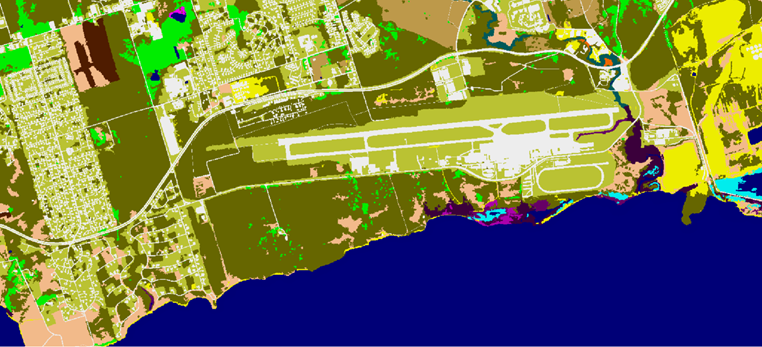
Improved Storm Surge Modeling Enhances Disaster Preparedness in the Caribbean
Expanding the availability of high-resolution land cover data in storm-prone regions is contributing significantly to better preparedness measures.

Improving Inundation Prediction and Visualization Capabilities for the New England Coast
Coastal flood Web-mapping applications help coastal managers in New England visualize and enhance awareness of coastal flooding.

Improving Stormwater Runoff Modeling in Washington
C-CAP land cover data were used to analyze local stream flow and drainage issues.

Incorporating Sea Level Rise Data into Hazard Mitigation Maps for New Jersey Municipalities
Inundation layers from the Sea Level Rise Viewer were incorporated into local hazard mitigation plans to help communities prepare for sea level rise and coastal inundation.

Increasing Resilience in the San Francisco Bay Area through the Adapting to Rise Tides Program
Lidar data, the Sea Level Rise Viewer, and other Digital Coast resources address the specific challenges of building climate resilience across diverse communities, assets, services, and jurisdictions.

Informing Bird Habitat Conservation Decisions in Texas
Partners used land cover and sea level rise data to help inform decisions on bird habitat conservation.

Informing Conservation Efforts in Coastal Georgia
Coastal conservation groups used the NatureServe Vista decision-support system to create new maps that aid in preservation of Georgia’s coastal habitat.

Informing Future Flood Hazard Planning in Puerto Rico
High-resolution flood data incorporated into the Coastal Flood Exposure Mapper helps inform planning decisions.

Informing Offshore Wind Planning with Vessel Traffic Data in the Atlantic
The Bureau of Ocean Energy Management uses vessel traffic data when determining stakeholders to be involved in conversations regarding offshore planning areas.

Inspiring Citizens to Protect and Preserve Galveston Bay in Texas
C-CAP data were used to assess wetland health for the Galveston Bay Report Card.

Integrating Decision Support Tools for Land Use Planning in Coastal Texas
Three decision-support tools were used to demonstrate the innovative application and integration of tools for land-use planning and ecosystem management.

Leveraging Partnerships to Assess Damage and Recovery of Mangroves in Puerto Rico and Florida
Social Science Basics training and resources helped identify partners to help assess mangroves damaged during the 2017 hurricane season.

